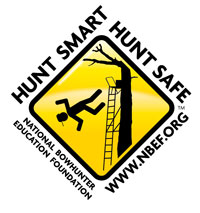Tree Stand Safety
The Wisconsin DNR partnered with the Marshfield Clinic Research Foundation and the UW Hospital and Clinics in 2014 to learn more about tree stand accidents and how to prevent them. A thorough review of medical reports found some common themes, the most important of which is that deer hunters often overestimate their ability to avoid accidents.
Wood can rot, tree steps snap, railings fail and climbers slip. None of the hunters that wound up in the trauma center in our study considered these possibilities when they began their climbs.
Surveys tell us that one-quarter of our bowhunters have experienced a fall or near fall from an elevated stand in the past. Less than half of Wisconsin deer hunters use a safety harness every time they climb. Published research indicates that risky climbing behavior can catch up with you the longer you hunt.
Use a fall-restraint device every time you hunt above the ground, regardless of whether you hunt with a ladder stand, a tower stand or a hang-on stand.
Read stories from the news
Wear your full-body harness
Hunters must wear their harnesses for them to work. A 2003 survey of Wisconsin gun deer hunters showed that two-thirds of hunters who hunted from tree stands owned a harness but less than one-third of them reported actually using the harness. Another third did not own a full-body harness.
Find out which models meet revised national standards: TMA Standards [exit DNR].
Take a free online tree stand safety course
A 15-minute investment of your time in taking an online safety course could save your life. The Treestand Manufacturers Association provides a free, interactive course that you can finish in minutes.
Treestand Safety Course [exit DNR]
Basic rules of treestand safety
No matter what type of tree stand you use, the basic rules apply to all of them.
- Always wear a full-body harness also known as a fall-arrest system. Connect to your tether line and keep your tether line short. The tether is designed to keep you in the seat, not to catch you after you fall.
- Always have three points of contact while climbing into and out of the treestand: This means two hands and one foot or two feet and one hand at all times.
- Always use a haul line to raise and lower your unloaded firearm or bow into and out of the stand. You can also use the haul for other things like a heavy backpack.
- Use a lifeline when climbing up and down, this keeps you connected from the time you leave the ground to the time you get back down.
Take these other steps to stay safe.
- Be aware of suspension trauma: Suspension trauma can happen in less than 20 minutes and can be fatal. Attaching an additional foot strap to the body harness will take pressure off your upper legs should you fall.
- Select a tree that is substantial enough to support your weight.
- Read, understand and follow all of the manufacturer's recommended procedures.
- Do not alter your equipment.
- Use a short tether between you and the tree when seated in the treestand.
- Let people know where you'll be hunting, where you'll be parking your vehicle and when you intend to return.
- Carry a cell phone with you so you can call for help if you are injured after a fall.
More resources
- Stand up for safety, Natural Resources Magazine, October 2014.
- TMA public safety announcements [exit DNR]

